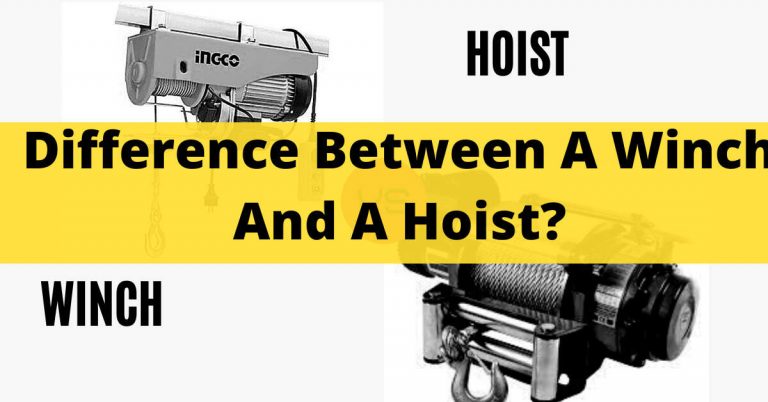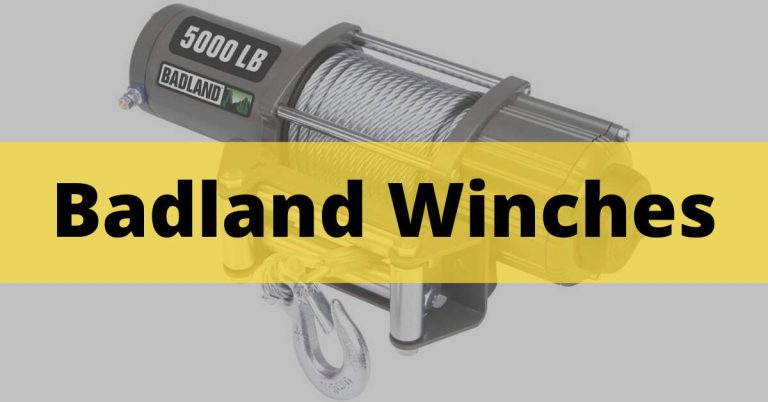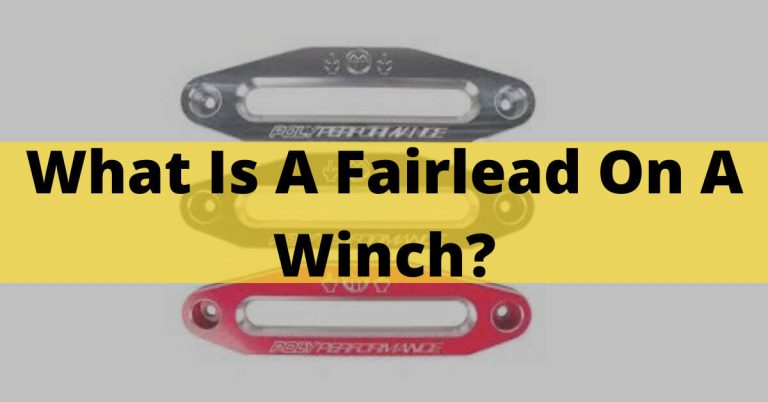How Does A Double Drum Winch Work? [Updated In 2023]
Two drums are used in double drum winches, and a cable “loop” is necessary. On the drum system, the cable is continuously spooled in and out. You can lift or pull it as far as you like because it doesn’t build up on a drum. The winch’s maximum force is available during the whole lift or pull.
The disadvantage of employing a twin drum winch is that the loop must have at least one return pulley.
The idler drum and power drum of the drum winch machine are where the cable or rope is spooled. The cable is wound in and out while the drum is spinning.
As a result, a load will be lifted or pulled. A cable loop is necessary for the two-drum setup. Since the cable does not build up on the drum, the lifting or pulling distance is limitless.
- What is A Double Drum?
- Structure Of Double Drum Winches
- Things to Consider for Double Drum Winch Design:
- Applications Of Double Drum Winch:
- Winch For Construction And Applications:
- Advantages Of Double Drum Winch:
- A Double Drum Winch Operation Applications:
- A Double Drum Winch Structure Design:
- Double Drum Electric Control System:
- key Points Of Double Drum:
- Electric Double Drum Winch:
- Features
- Repair And Maintenance Advice:
- Frequently Asked Question:
- 3. How Do You Make A Winch Stronger?
Additionally, the entire length of the lift or pull is possible with the winch’s maximum force.
When the winch capacity is exceeded during a winching operation, the machinery will malfunction, or the rope may break.
Therefore, considering your intended winch uses could help you avoid a lot of hassle. Consider analyzing and calculating the weight you intend to pull or lift.
What is A Double Drum?
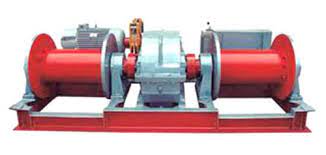
Double drum winches are created for lifting, general pulling, anchoring, and towing operations on land and at sea.
Depending on the driving force, it can be either a hydraulic winch or an electric winch.
Coaxial or waterfall drum arrangements are both possible.
The winch with double drums performs difficult jobs with more strength and efficiency when compared to a winch with a single drum. Each drum winches may be constructed and customized to match your specific demands.
Structure Of Double Drum Winches
A customized winch is a double drum winch. It has a single reduction box, a single motor, two drums, and a double drum synchronous output. You can use the two drums alone or simultaneously.
One drum is used for installation, one drum is used for deconstruction when working, or one is used to raise and one drum to drop. High-speed and slow-speed double drum winches can be tailored to the various speeds users demand.
Things to Consider for Double Drum Winch Design:
We can provide the ideal winch system for your needs because we are one of China’s top double drum winch manufacturers. There are various aspects of winch design that you must take into account.
1. Rope:
The choice of rope serves as the foundation for a winch design.

You can choose between rope and chain to be spooled on the drum depending on the load you intend to handle.
2. Motive Power:
We recommend trying electric power first if you do not have a specific power demand for your winch because it is simple to operate, inexpensive, and straightforward to install.
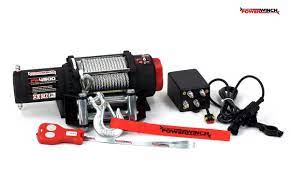
Additionally, various power winches, such as hydraulic and diesel engine winches, can be created to meet your precise requirements.
3. Transmission:
The amount of torque to be transmitted and the needed efficiency are the two main factors influencing the gearbox choice. For your convenience, we provide various gearbox options, including worm gear, planetary gear, and reduction gear.
4. Ancillary Equipment:
A large variety of auxiliary equipment is available to enhance the winch operation and tailor it to your specific needs.
Some alternatives include a Clutch, a rope spooling mechanism, a band brake, a rope length, and tension measurement.
Applications Of Double Drum Winch:
On land and at sea, drum winches are frequently used for lifting, hauling, mooring, and towing tasks. The typical application comprises:
- On-site lifting and pulling of big loads during Construction
- Setting up and taking apart large machinery
- Mines that handle different minerals
- Barge and other vessel anchoring, mooring, and towing systems
- Offshore building initiatives
- Employed as slipping winches
Drum winches are available in various varieties, including lifting winches, pulling winches, mooring winches, anchor winches, capstan winches, and towing winches, depending on the tasks and uses they handle.
Winch For Construction And Applications:
The lifting winch is suitable for many installation and construction tasks requiring substantial lifting.
The double drum pulling winch delivers the sizeable pulling force. It is often used to pull or drag big loads in the marine, mining, and construction industries.
The double drum scraper winch is specially made for underground mining and mineral processing. It is resilient in complex mining environments.
Winch For Marine And Offshore Applications
Double drum mooring winches can be classified as parallel and waterfall-type double drums according to the drum distribution shape. The winch is frequently employed to support and steer vessel maneuvering.
Boats frequently employ double drum capstan winches to manage mooring lines. For many different huge cable hauling applications, it is perfect. Electric, hydraulic, and diesel versions of the capstan drum winch are available.
Double drum towing winches are built for tugboats, workboats, and other ships. Electric or hydraulic power to drive it.
Advantages Of Double Drum Winch:
It provides several benefits, including straightforward operation, dependable performance, ease of use and maintenance, and outstanding operating efficiency.
A Double Drum Winch Operation Applications:
The drums on a double-drum winch are two. The other is wound oppositely from the one that is wound forward. The primary drum will lift the winding rope as the winch rotates ahead.
The winch will drop if the secondary drum is coiled in the other direction, allowing it to act as a balancing force on the main shaft.
A Double Drum Winch Structure Design:
The significant parts of the double-reel winch are the engine, reducer, central reel, auxiliary reel, control, and so forth. The primary shaft has these parts installed.
A more rigid part is the primary shaft. It not only supports and shields, but it also carries the entire weight.
A central reel is located on the right side of the double-reel winch, near the motor, and an auxiliary reel is mounted on the left side, in line with an operational mechanism and a steel rope guide.
Double Drum Electric Control System:
PLC controls the double drum hoist winch’s electric control system. Resistors can be switched by the control system while regulating speed. We can consider the demands for long-term energy efficiency and safety in production.
Based on the original design, this electronic control system has been improved to a variable frequency speed control system.
The primary control system is the variable frequency speed control system.
If the variable frequency speed control system fails, the backup control system that switches the resistance speed can be activated.
key Points Of Double Drum:
- Smooth starting and ending
- Good performance, low noise
- High efficiency, less maintenance
- Lengthy-lasting materials, cutting-edge technologies, and long service lives
- High configurations, superior quality
- Compact and straightforward design that’s simple to install, use, and maintain
- Fully remote control and manual operation options
- Competitive and factory price
Electric Double Drum Winch:
The electric double drum winch is the ship’s deck gear for mooring, hauling, lifting, and other tasks.
Due to the closed gearbox, it is highly safe to operate. It can operate independently with just one drum or simultaneously with two drums.
Features
- high performance and security
- compact design, excellent quality
- simple to install and maintain
- long lifespan and corrosion resistance
- either a manual or hydraulic clutch and brake
- working fluidly and steadily
- both regional and distant control;
- can be modified following your needs;
Repair And Maintenance Advice:
- Always examine the connections, especially the anchor and bearing seat bolts, to see if any bolts, rivets, or pins have come loose or fallen off. If they are too loose, they need to be fastened.
- Check the reduction box’s gear meshing condition regularly. See whether the gears are moving, if the teeth are worn out, if there are any significant damages, like cracks and broken teeth, and if the oil in the fuel tank is sufficient and hasn’t degraded or precipitated.
- Always make sure that the lubricating oil pump is operating normally, that each lubricating component’s oil flow is even and precise, that the oil ring is spinning, and that the oil temperature is expected; if not, it should be corrected and replaced as soon as possible.
- Regularly examine the braking system’s transmission mechanism, hydraulic station, brake wheel, brake disc, brake shoe, and other components to ensure that they are flexible and regular and that the gap between the brake block and the brake disc (or brake wheel) complies with regulations, and that the safety of the brake is maintained.
- Additionally, determine whether the action of the brake is regular and whether the operating brake handle still has a reserve trip of 1/4 of the total stroke when used in the library.
- Check the lead screw and nut of the depth indicator regularly for activewear, and test the overwinding protection switch and deceleration alarm bell. If the action is not timely, it must be tightened and corrected.
- Verify whether the master controller’s contact contacts, electromagnet contactor, various relay signal devices, etc., are burned out. If there is burnout, promptly fix or swap out the contacts.
- Check the inspection records for wire rope breakage and wear, as well as if the wire rope is neatly wound on the drum and the rope head is securely fastened.
- Check for loose, deformed, and missing pieces in the coupling and its axial displacement and clearance, radial displacement, and end face tilt. Replace the elastic rubber ring that has been broken, and replace any missing pins, nuts, washers, or other fasteners.
- Always wipe down the equipment, remove any floating dust or other debris, and maintain the machine’s cleanliness
Frequently Asked Question:
1. How Many Wraps Should You Leave On A Winch?
Samson advises always leaving at least four wraps on the winch drum. AmSteel-Blue lines must always have at least eight wraps on the drum because of their great strength and low coefficient of friction.)
2. How Do Traction Winches Work?
Friction building up between the drums and the wire rope is the foundation of the traction winch principle. On the storage winch, the wire is kept.
The wire can run straight from one drum to the other since the drum axes are positioned at one another.
3. How Do You Make A Winch Stronger?
Use a snatch block to double the line if you wish to twice the force of your winch or if the anchor point is too close to let out enough cable for a hard pull.
Using a snatch block, you may double your load capacity and spool out extra cable to use your winch’s maximum rating.
Conclusion:
The power drum and idler drum, on which the cable or rope is spooled, make up the drum winch machine. The cable is wound in and out when the drum is in motion. A load will be lifted or pulled by the ensuing tension.
The traction winch’s operating concept is based on the development of friction between the wire rope and the drums. The storage winch holds the wire.
The drum axes are fixed at an angle to one another, allowing the wire to travel straight from one drum to the next.
Additionally, there are several safety measures you should be aware of before using a winch to ensure a safe operation. Check the rope’s condition first to ensure it is not frayed or broken.
Second, keep your distance from the wire rope and load while operating. Third, never tie down a load with a winch while it is transported.
References:

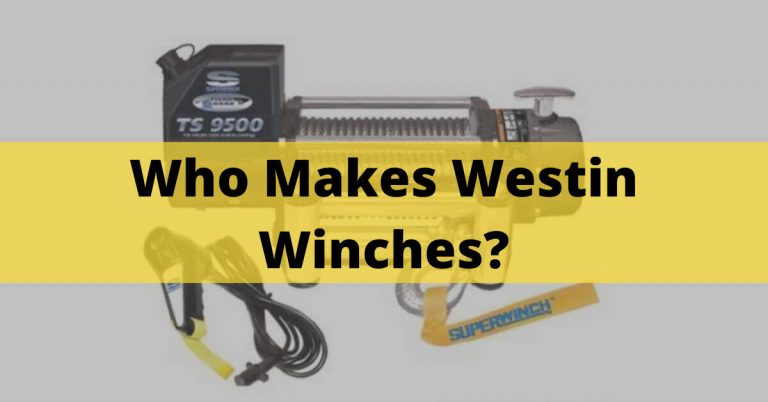
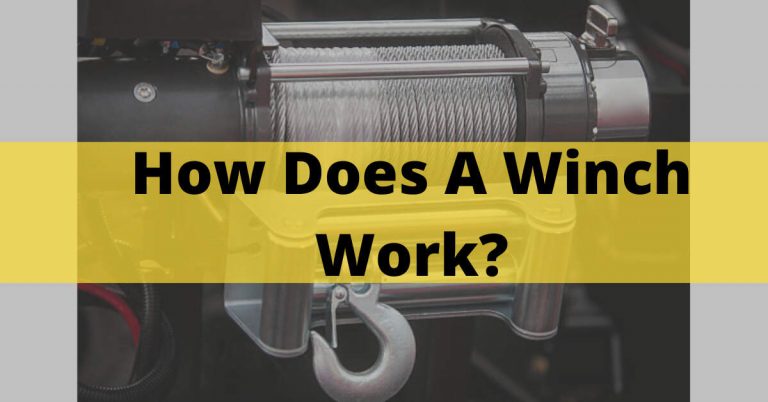
![How To Use Winch Without Remote? – [Safety Tips In 2023]](https://garagegrabber.com/wp-content/uploads/2022/09/How-To-Use-Winch-Without-Remote-768x402.jpeg)
